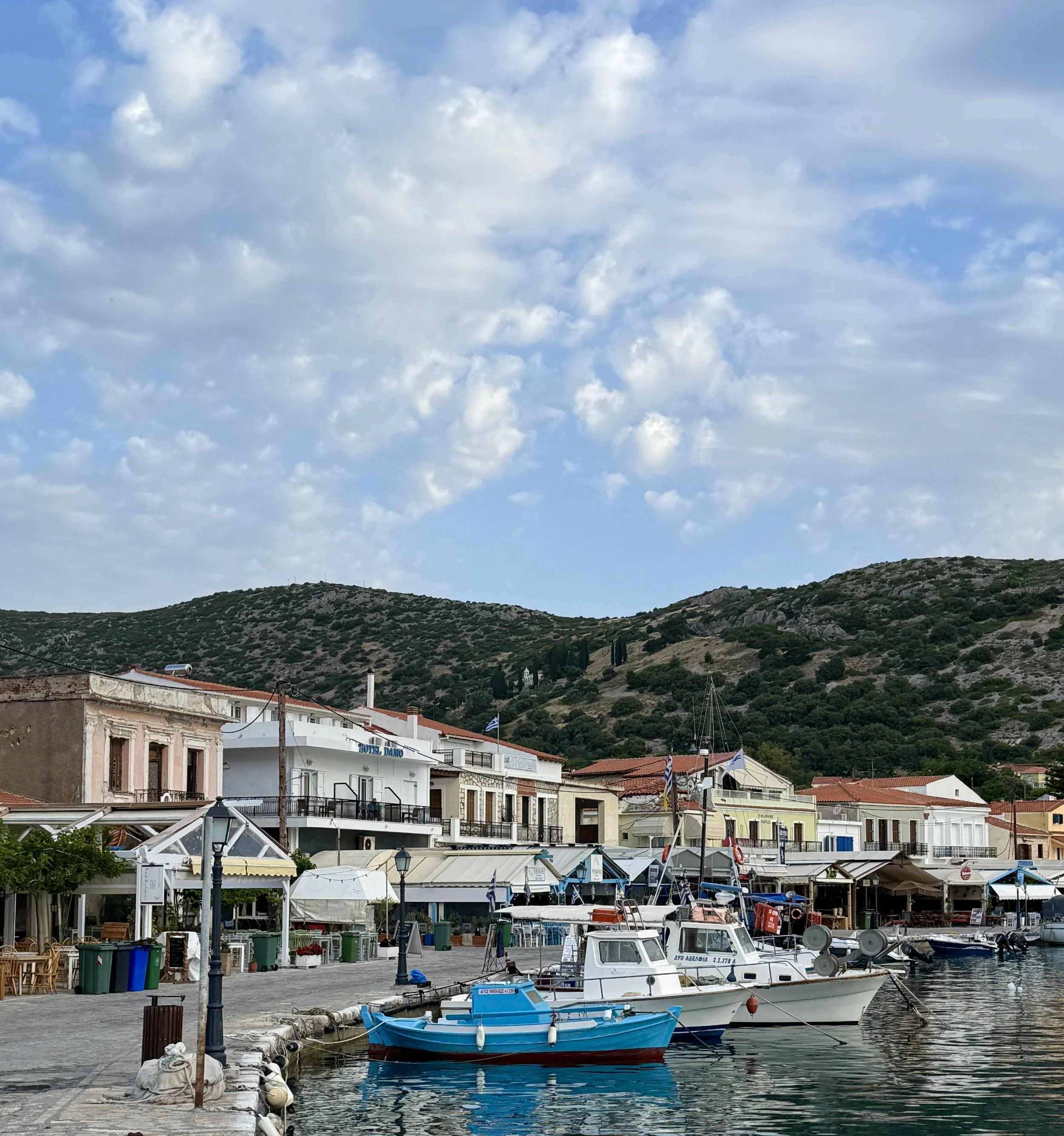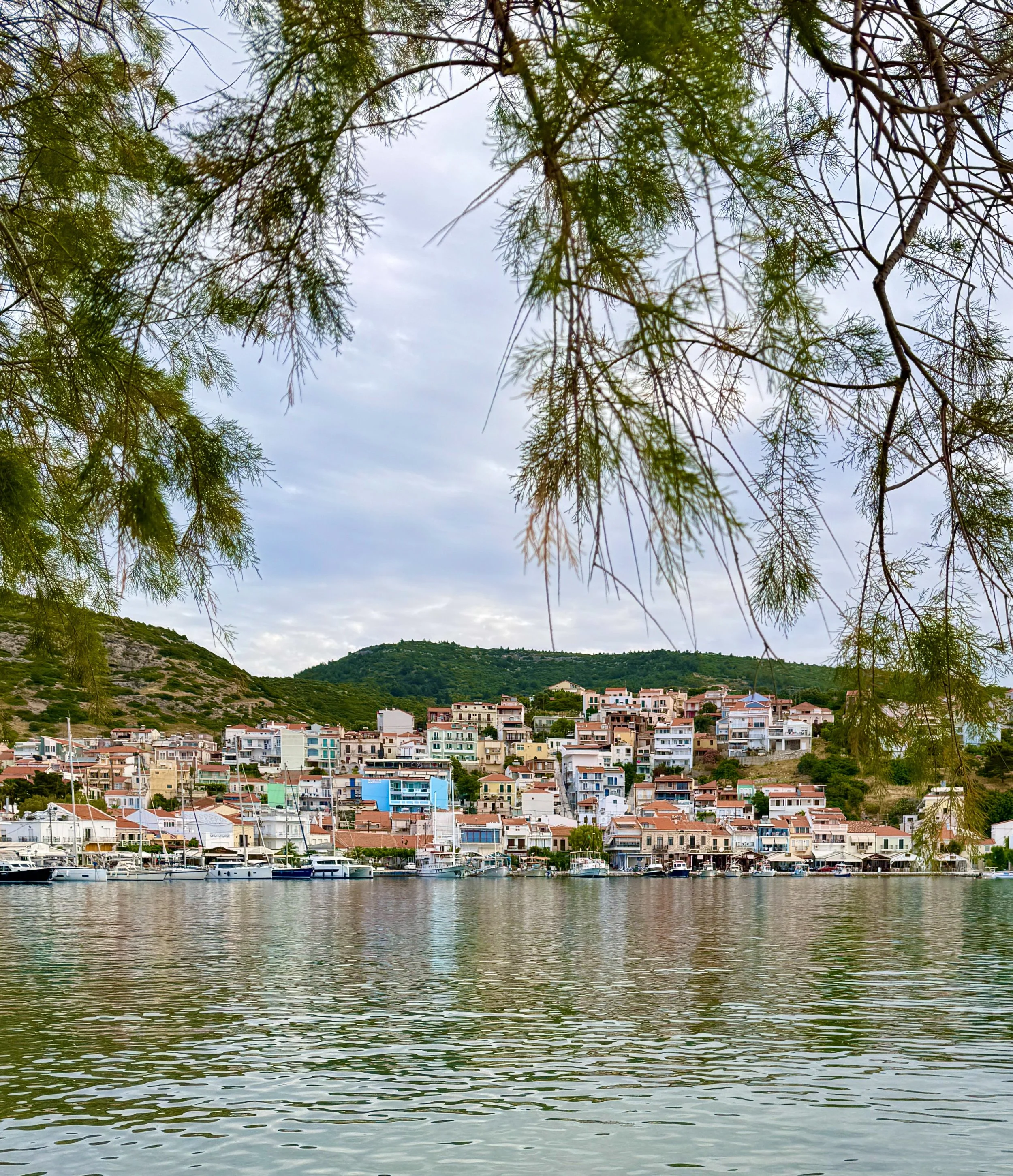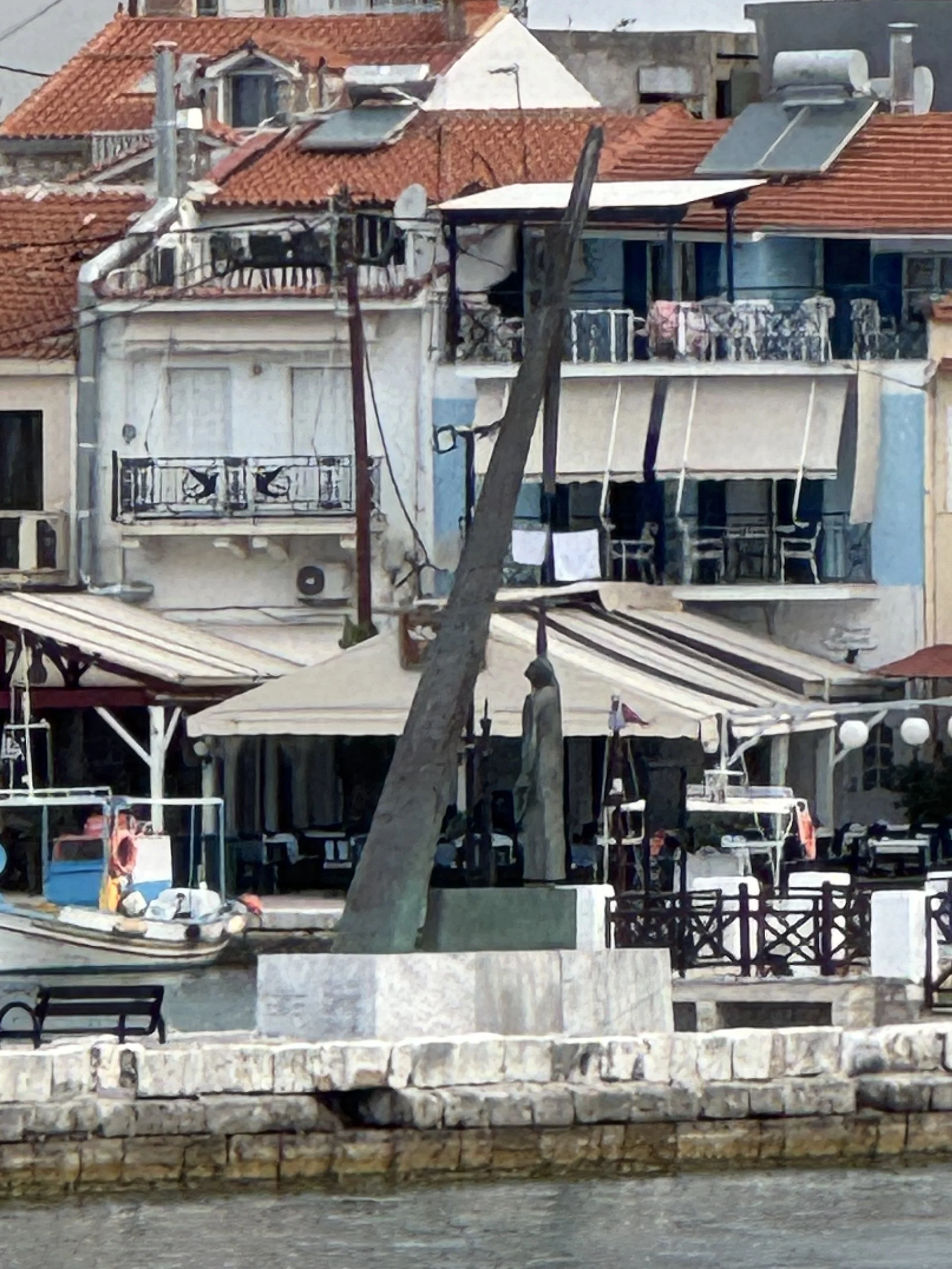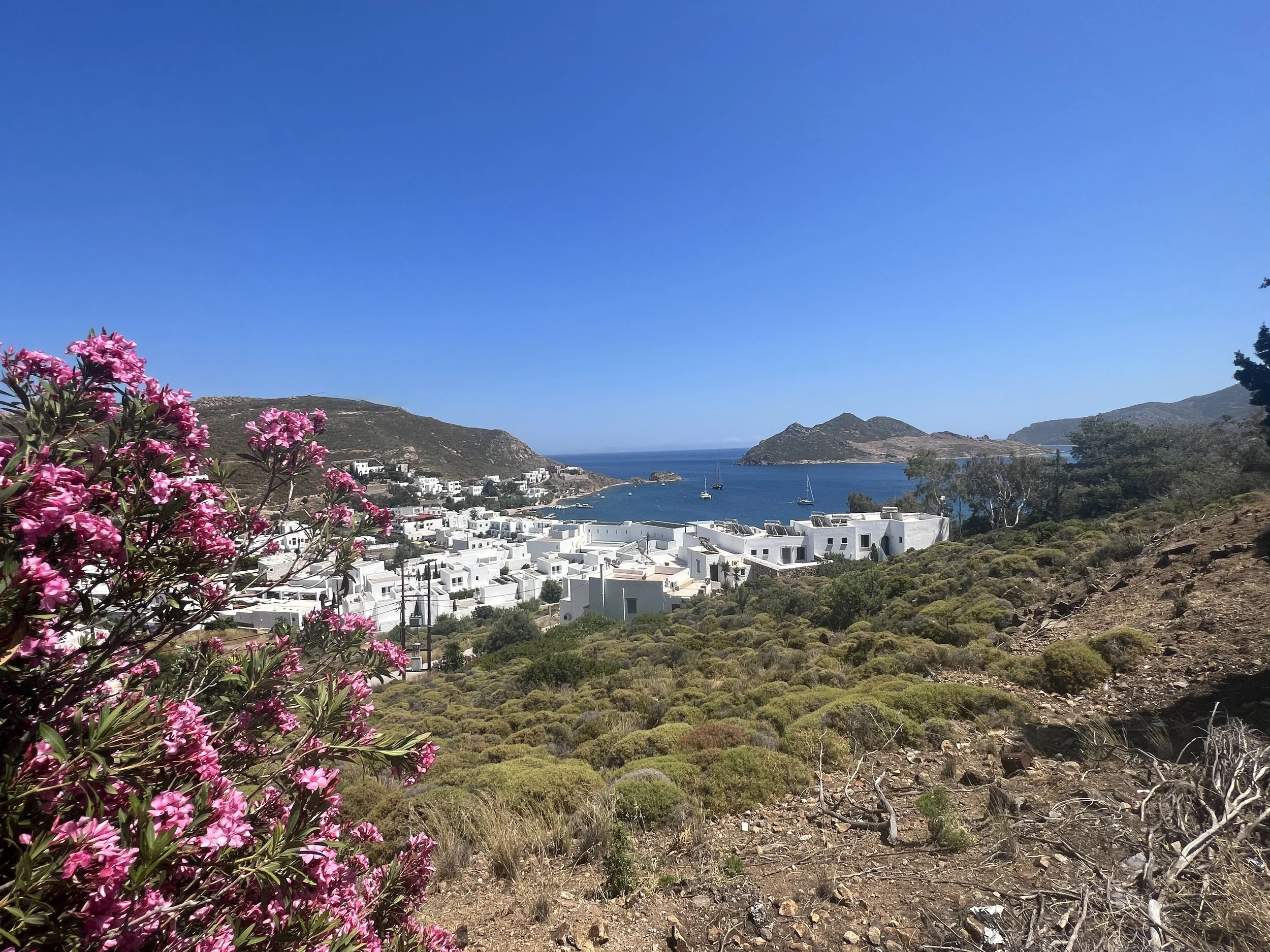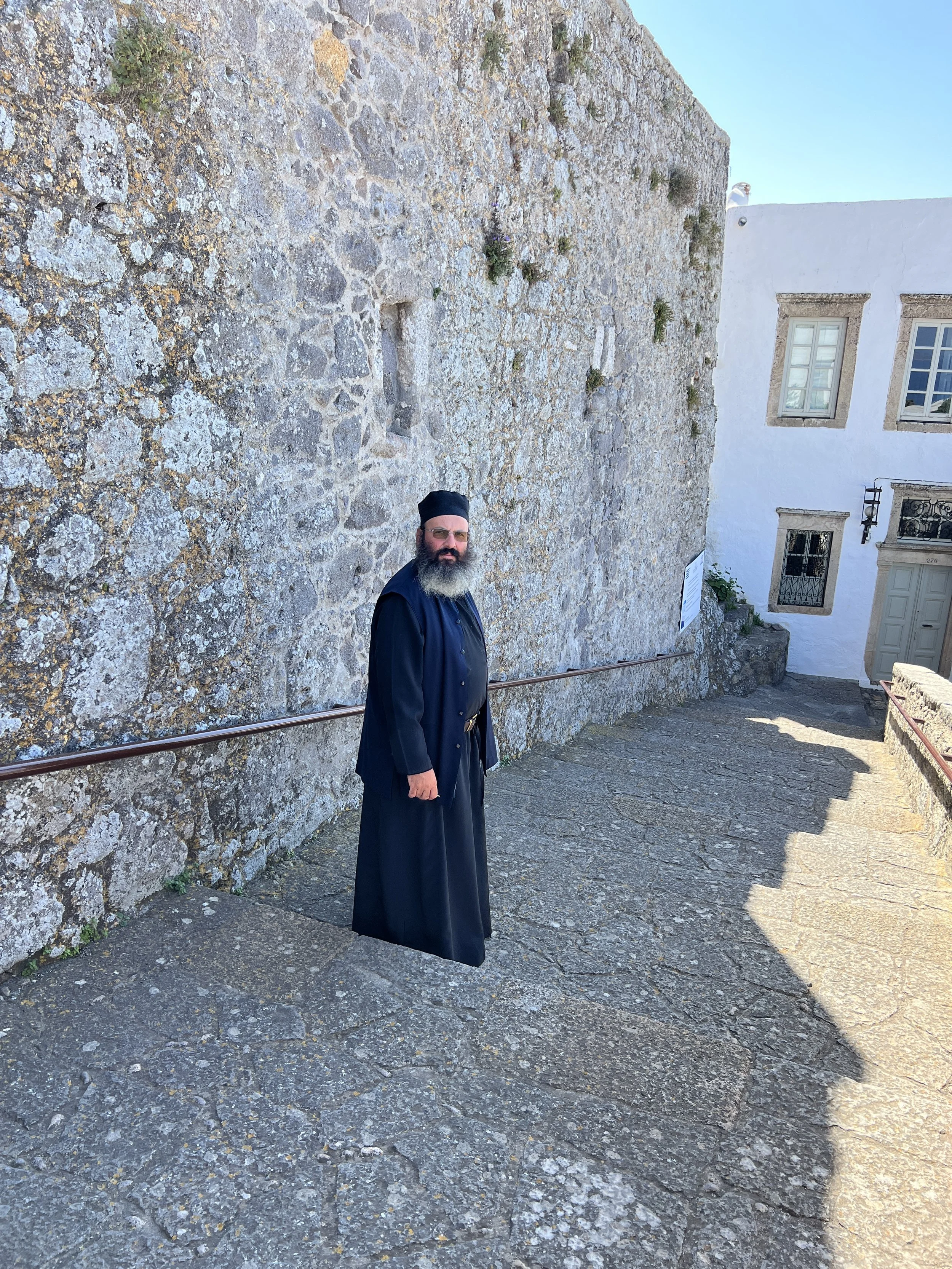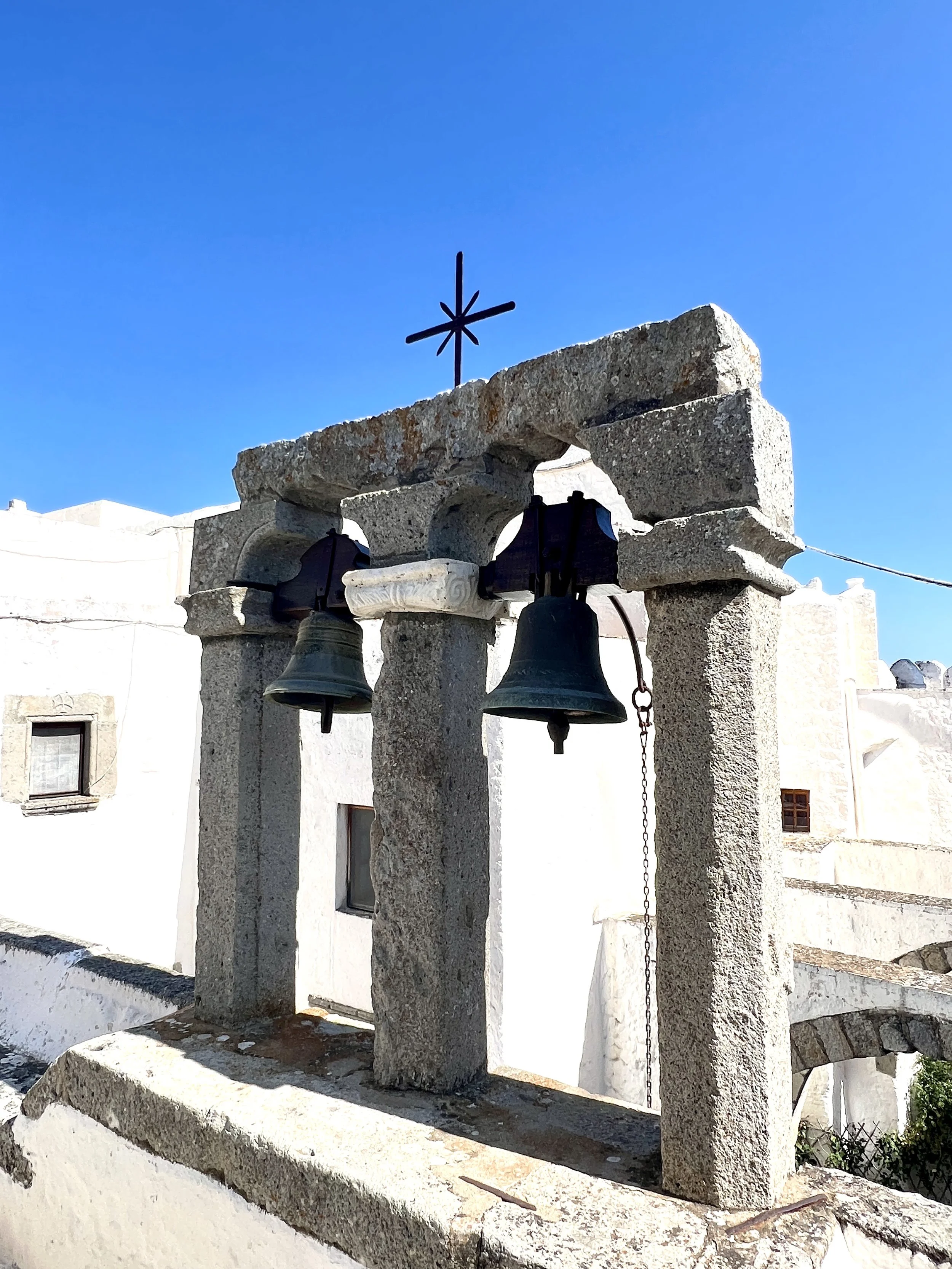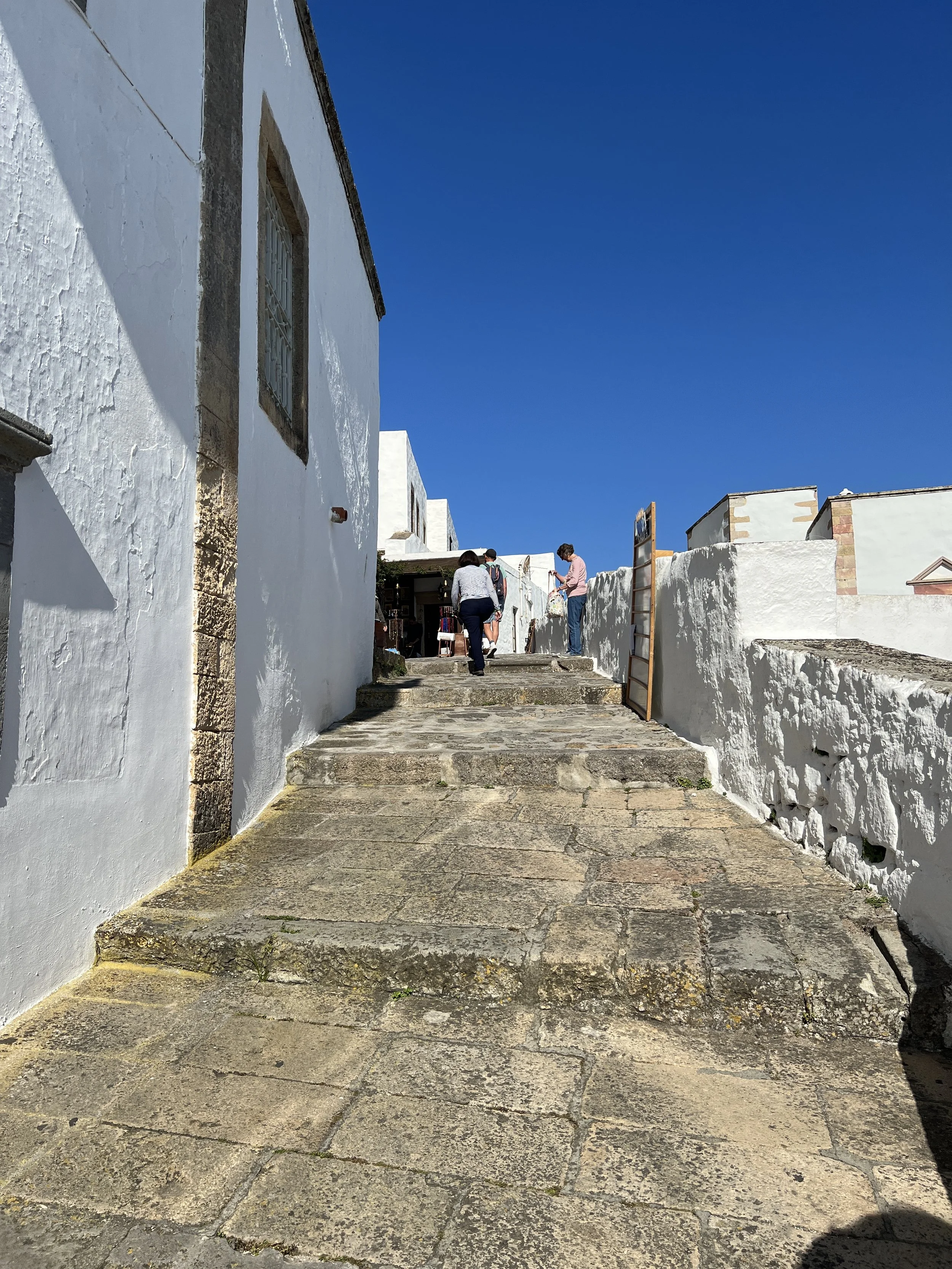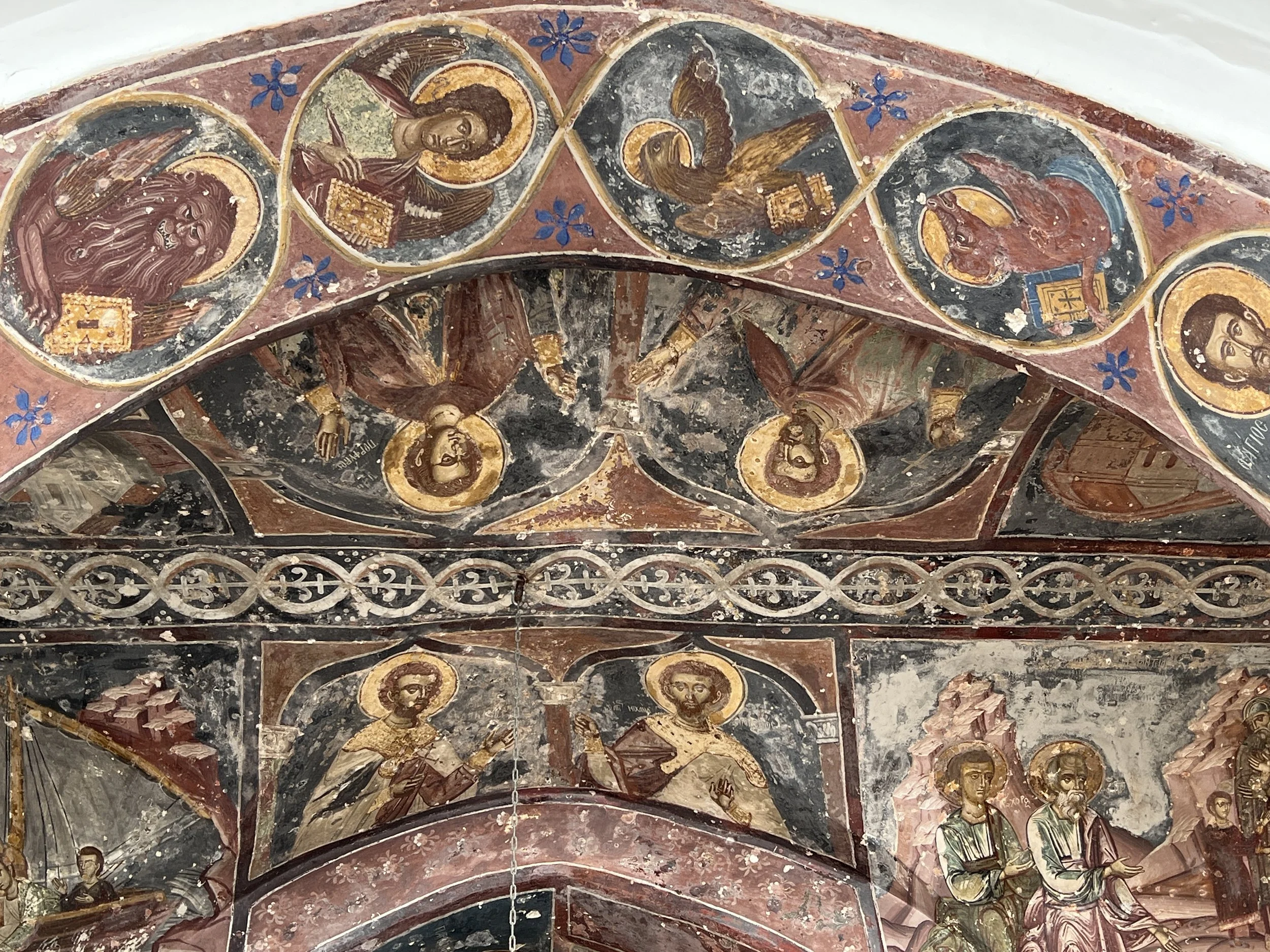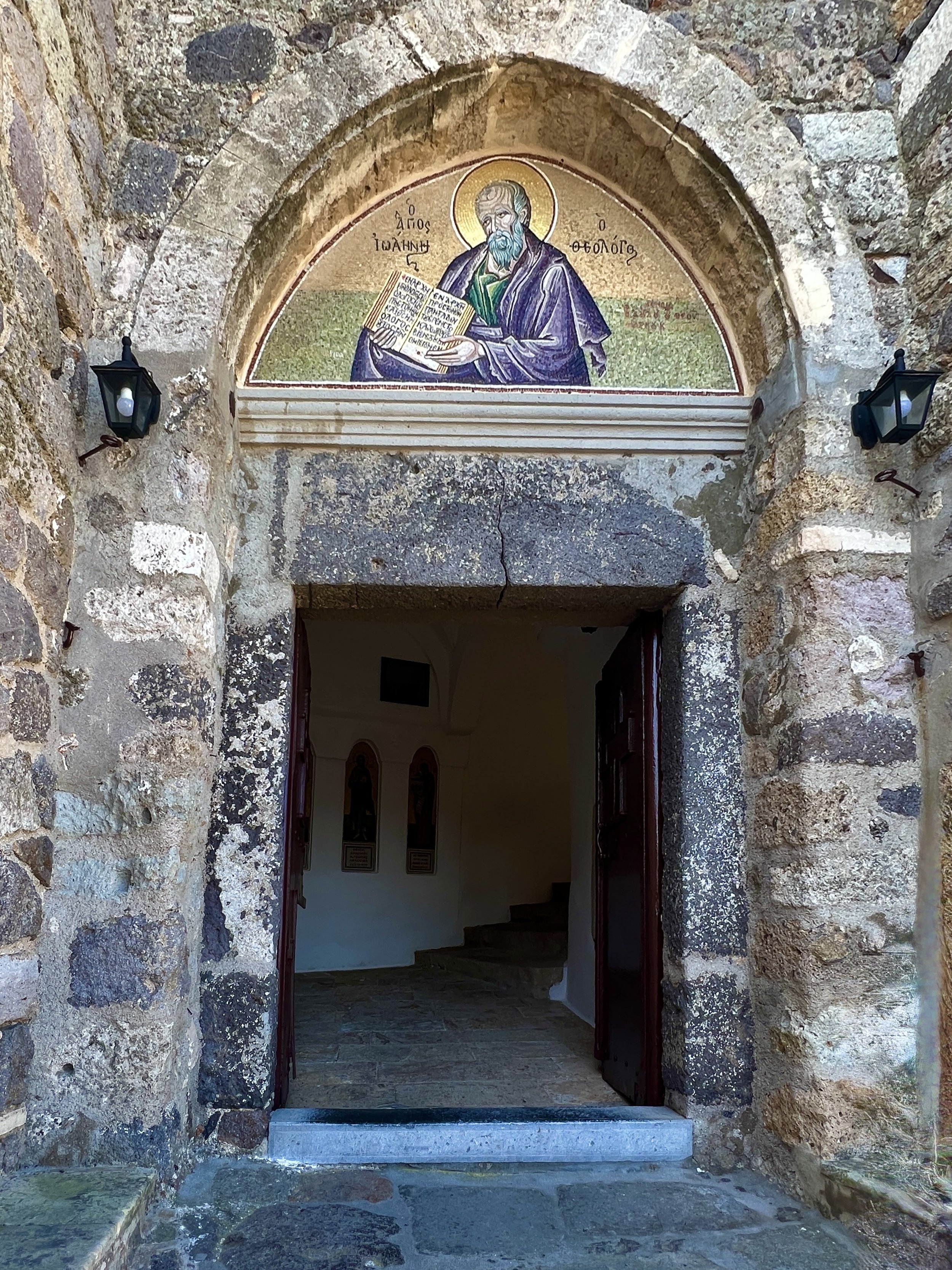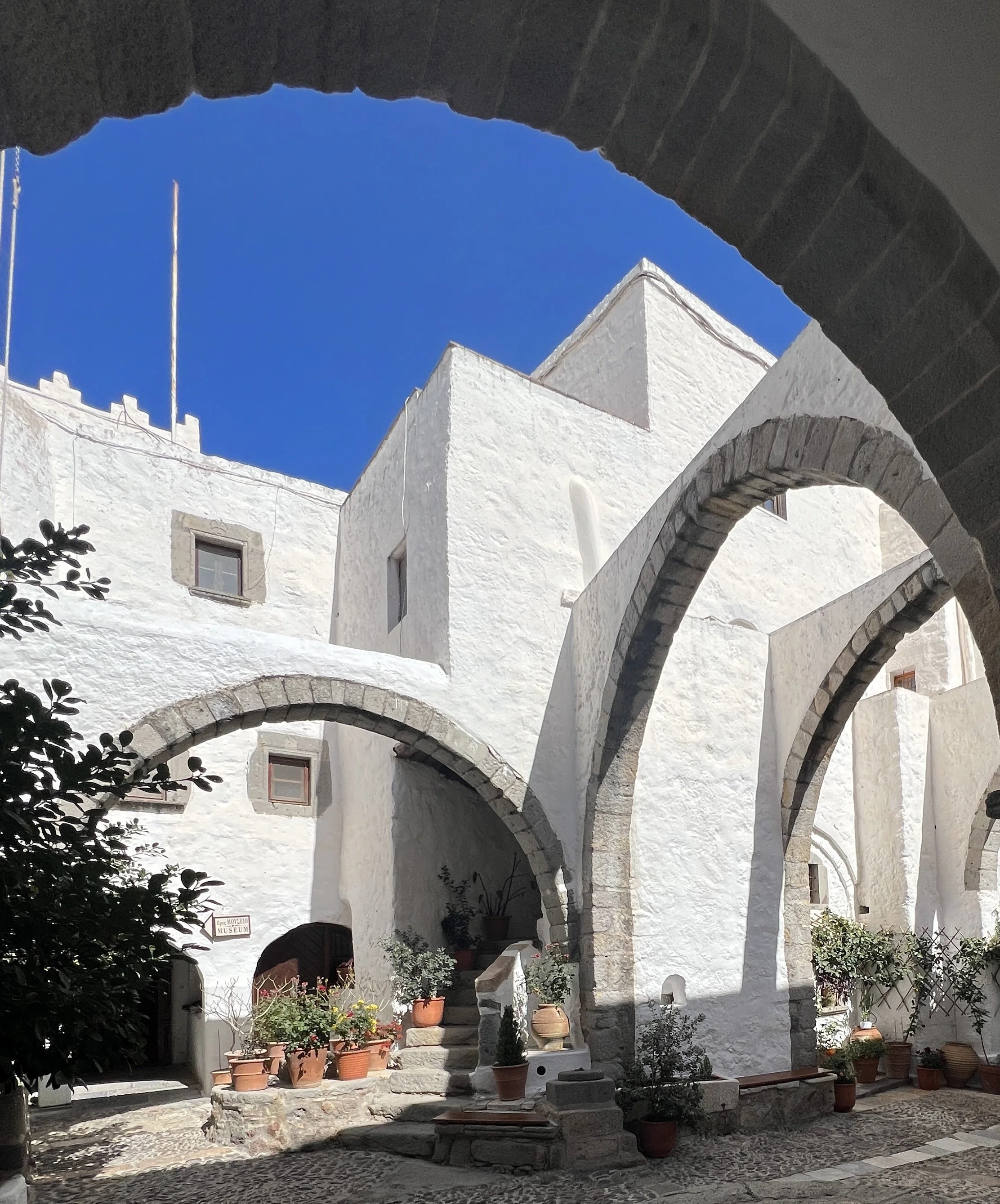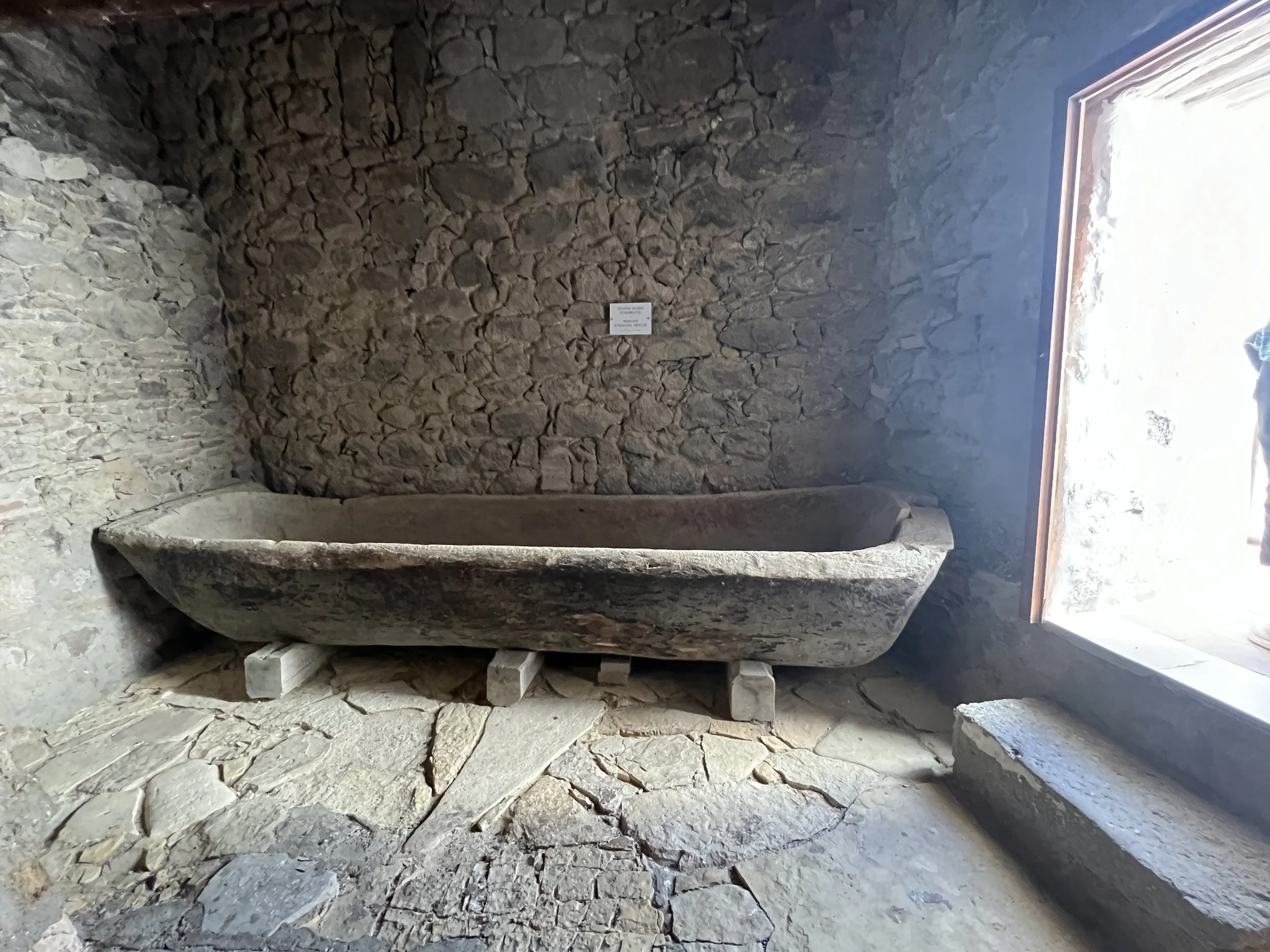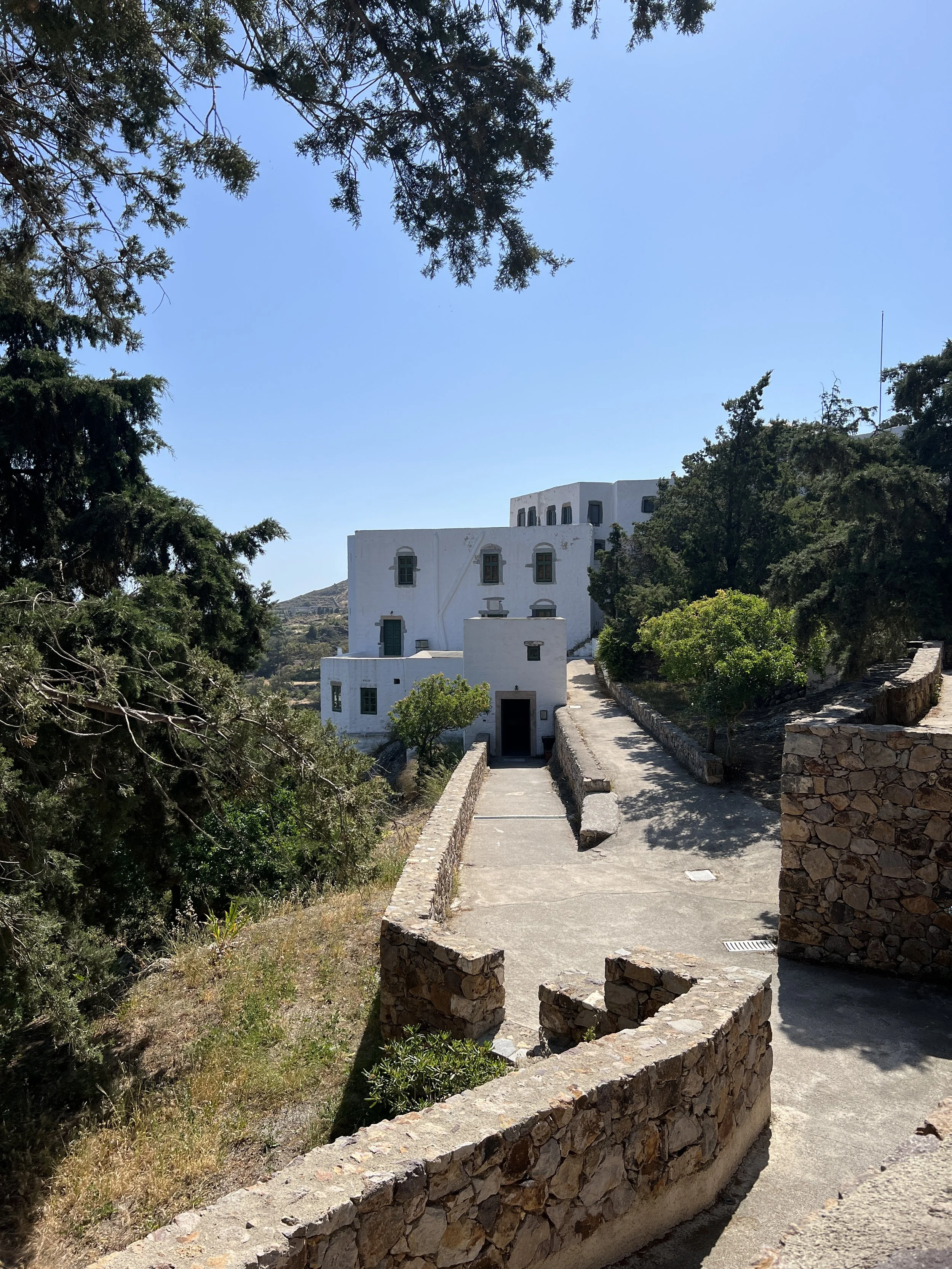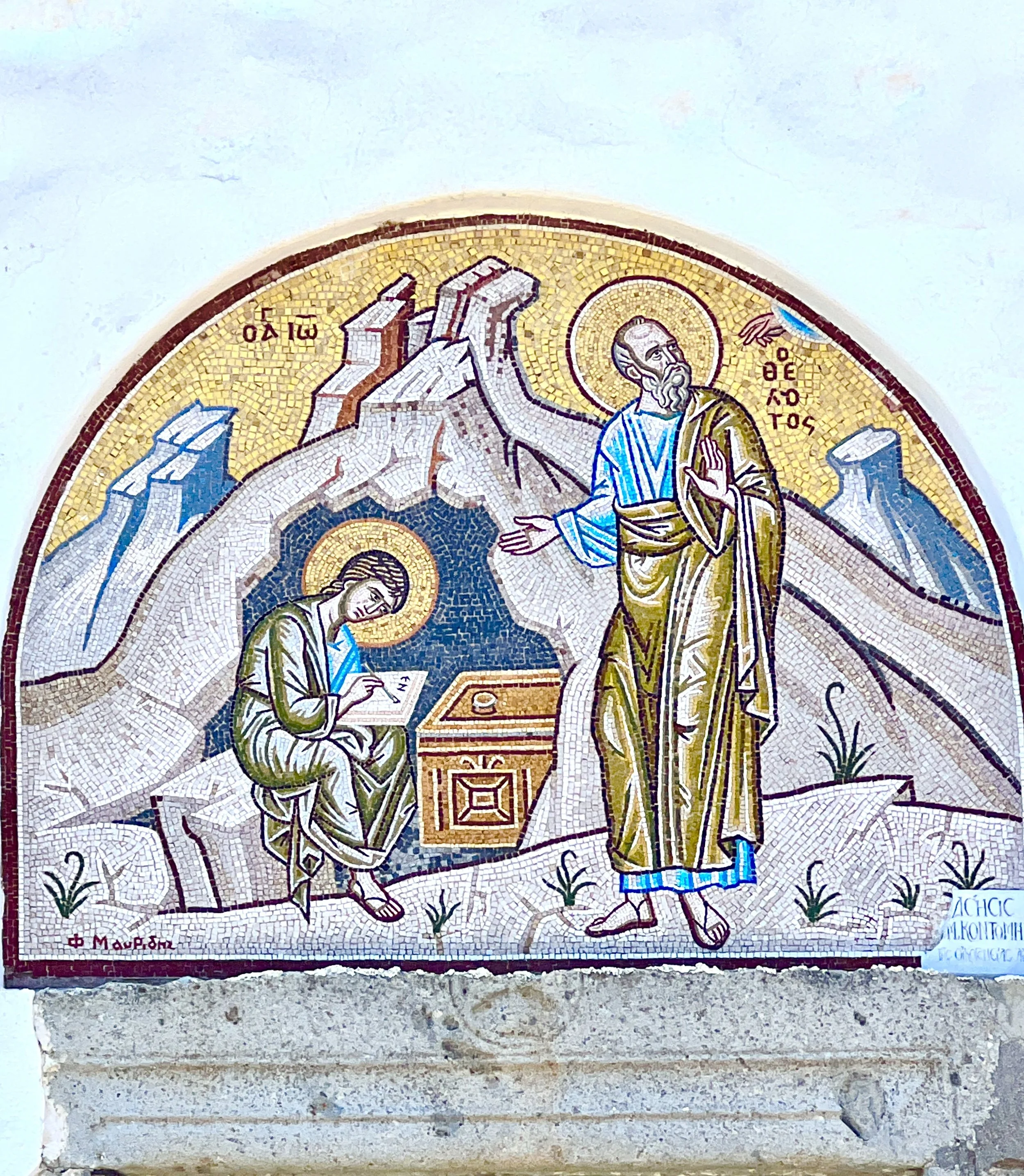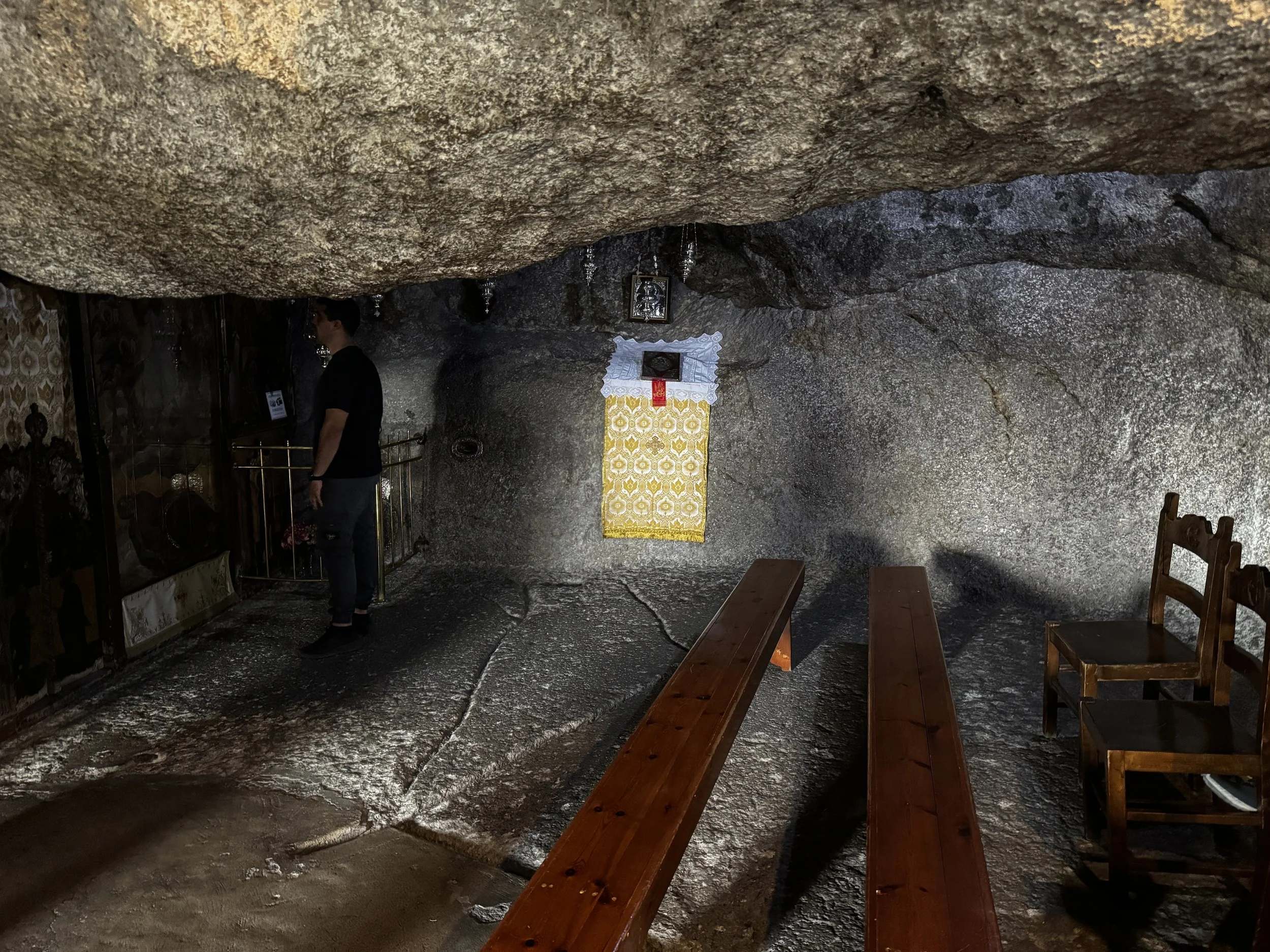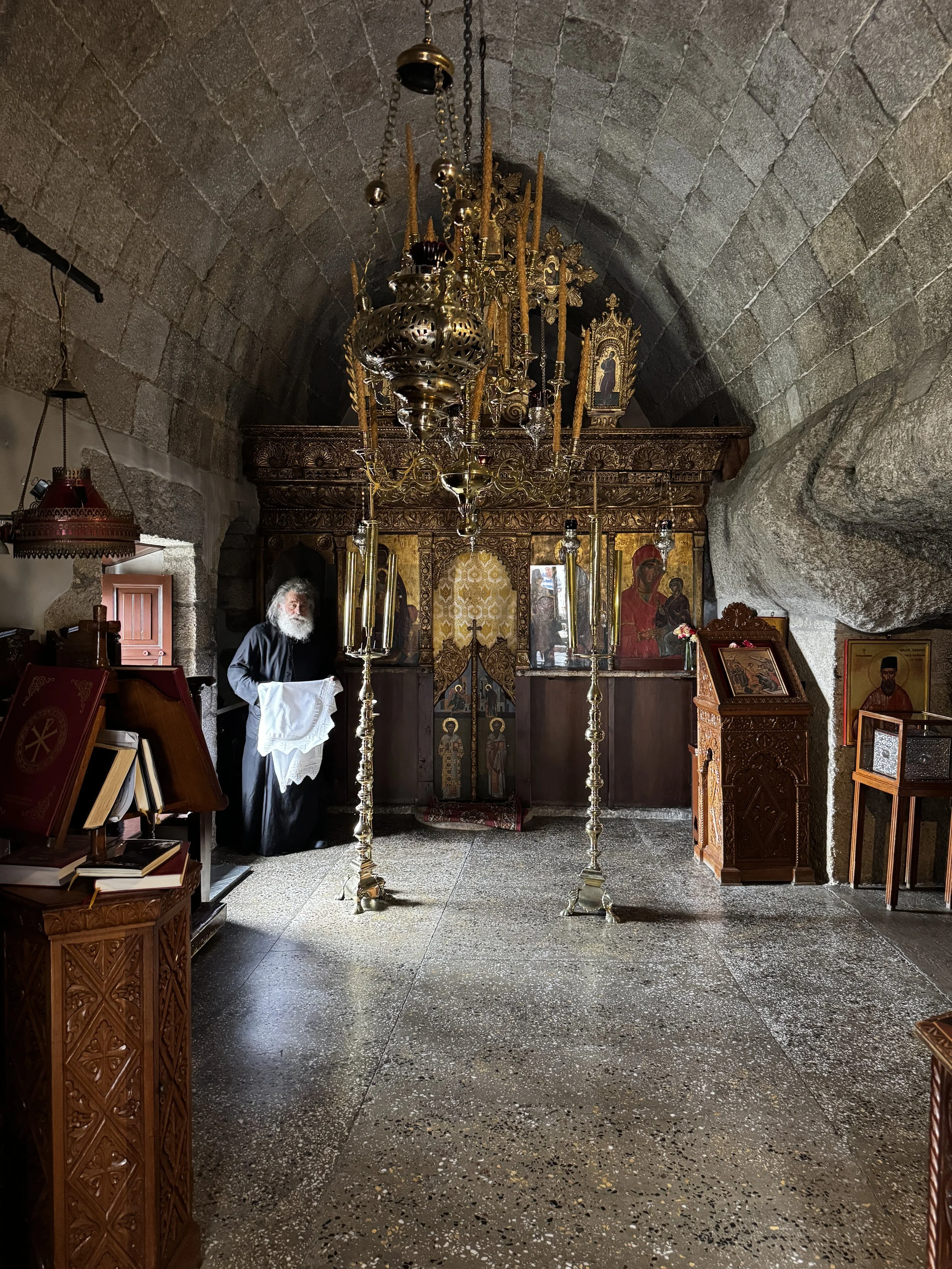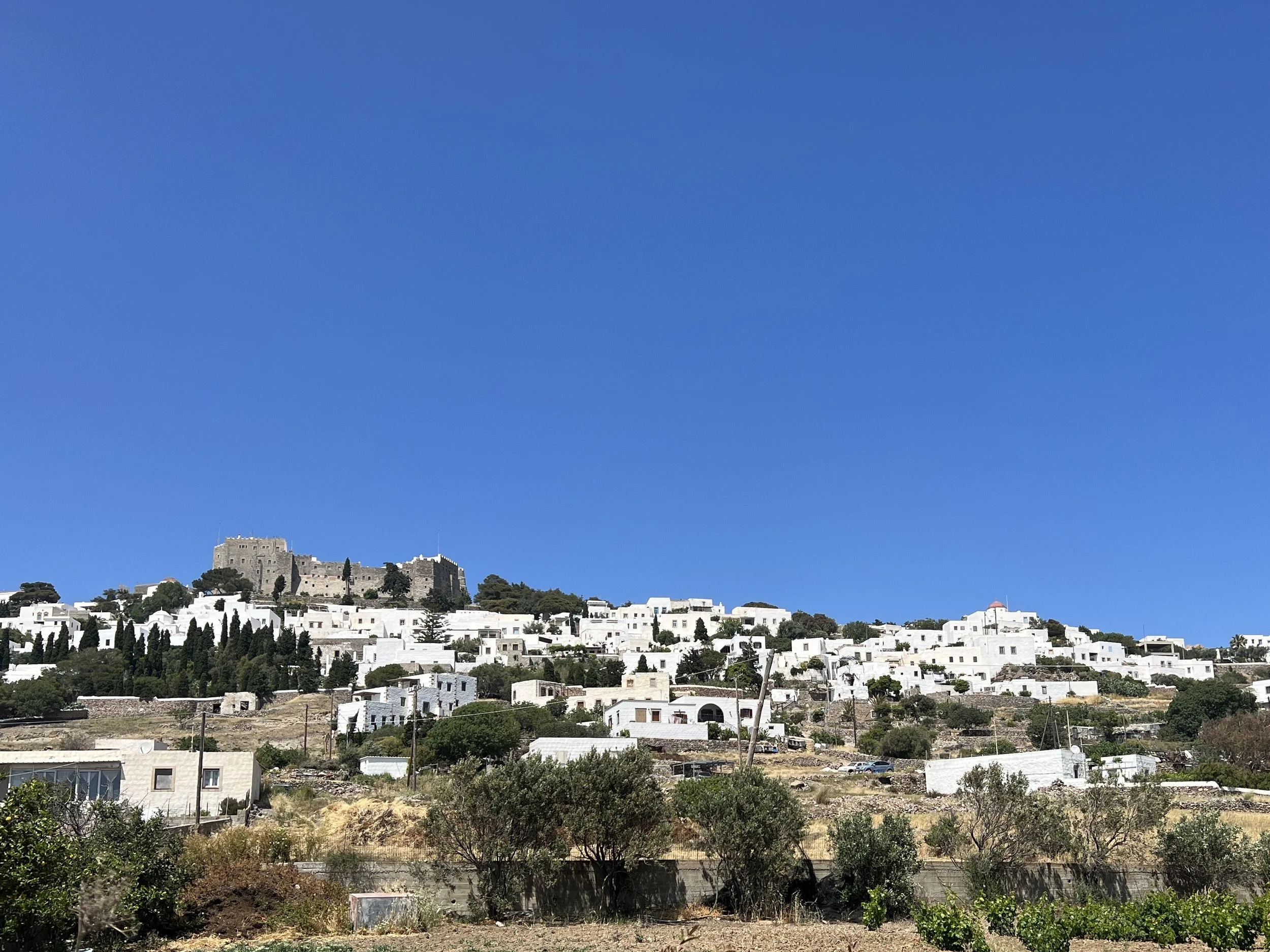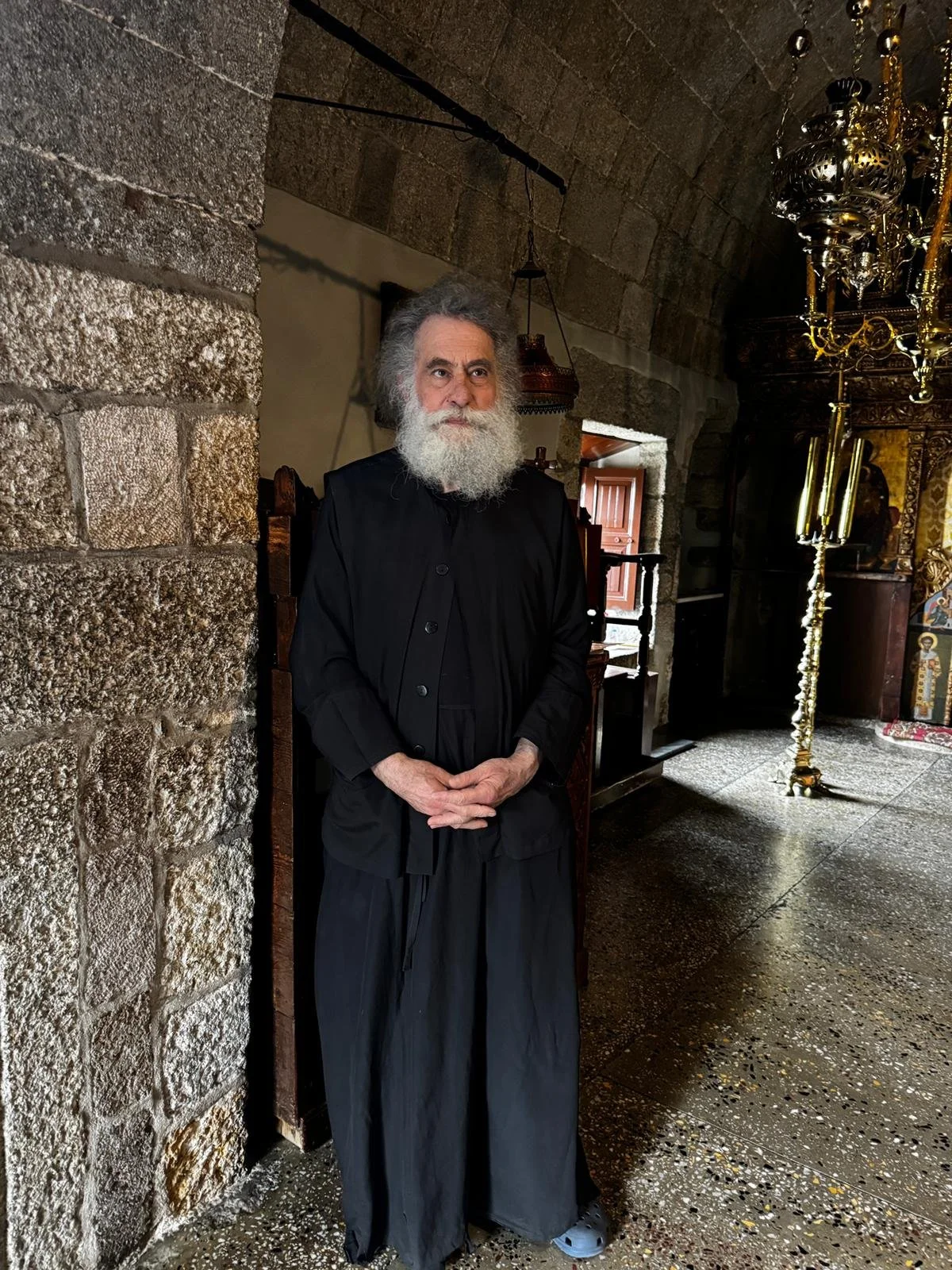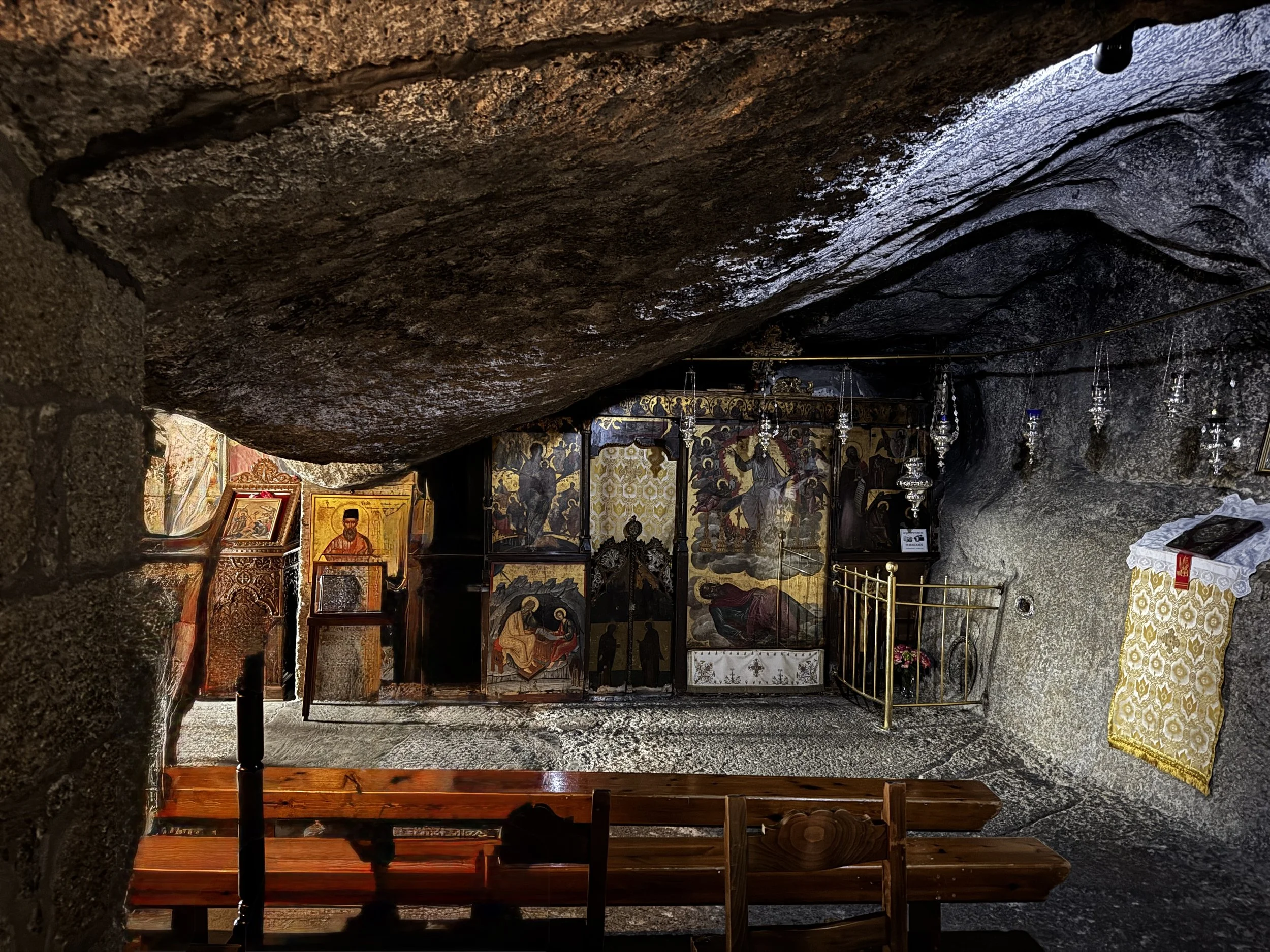Patmos, Greece
“I, John, your brother and partner in the tribulation and the kingdom and the patient endurance that are in Jesus, was on the island called Patmos on account of the word of God and the testimony of Jesus.” Revelation 1:9
We’ve always hesitated to post on our biblical travel to Patmos, as there isn’t much in the way of archeology from the time of John’s imprisonment (very interesting archeological of settlements in the neolithic age, the Bronze Age, and early Greek periods). We know from ancient authors / historians that this island has had the name Patmos from centuries before John. We also know that a number of these small Greek islands were used as places of banishment for political prisoners. Early Christian writers speak of Christian persecution by Rome at the time of John, persecution that sometimes included exile. John is clear that Patmos is where he was and long Christian tradition has honored that fact.
In 1088, the monk Christodoulos Latrinos was given, by the Byzantine Emperor, the property on which sits still today the Monastery of St John the Theologian. The monastery is built like a fortress, with a protected entrance. It sits above and adjacent to the “Cave of the Apocalypse”. Tradition is an important factor in studying archeological sites and a clue that cannot be ignored. Tradition says that while John was on Patmos he lived in this cave and this is where he was the given the vision of the Revelation. The monastery has of course undergone changes and renovations over the centuries, but it still retains its basic original form. At the time of its construction, Turkish raids and sea piracy were serious threats. The monastery was a fortress that protected not only the monks but also the citizens of the island. The monastery continues to preserve and protect an ancient library that includes over 80 manuscripts of the New Testament.
At the base of the monastery, down through the little village of Chora, and down a beautiful and paved path, is the entrance to the cave of the apocalypse. A building has been constructed around the natural cave to protect it. Inside is the Chapel of St. Anne. This year, one of the monks attending to the chapel was kind enough to allow us a few photographs.
Of all the Biblical sites we’ve visited, all far more interesting in terms of archeological finds, this site retains a peaceful spiritual feel. Now that large cruise ships cannot pull into the too small harbor at Skala, there are fewer tourists and less bustle. The beauty of the island and the surrounding sea combined with the gorgeous small chapels / brilliant white buildings of Chora / and the peaceful atmosphere of the monastery and Chapel of St Anne are conducive to prayer, reflection and thankfulness for the inspiration granted to St John.
Patmos Greece. Monastery of St. John the Theologian


